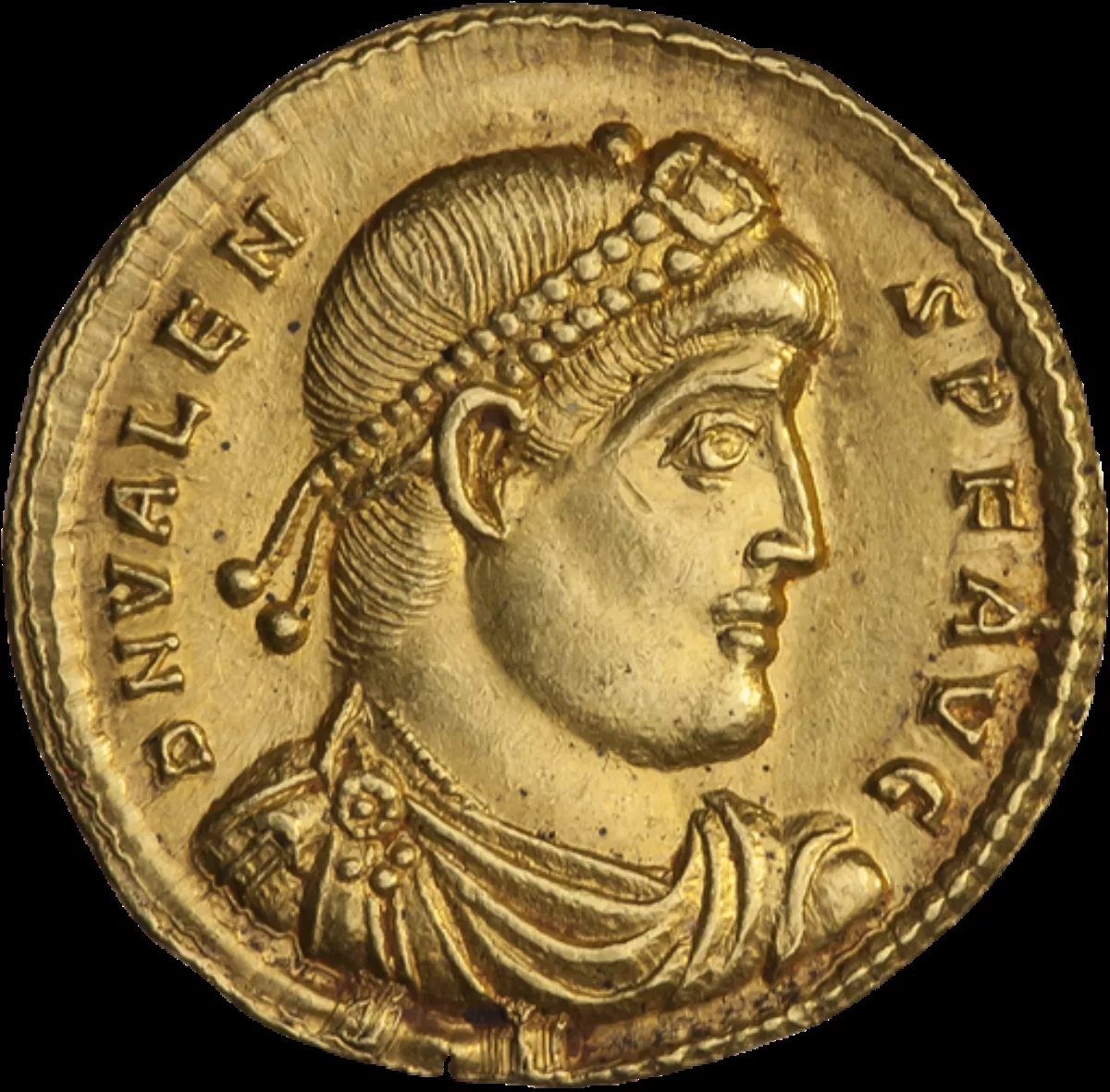 1.
1. In 378, Valens was defeated and killed at the Battle of Adrianople against the invading Goths, which astonished contemporaries and marked the beginning of barbarian encroachment into Roman territory.

 1.
1. In 378, Valens was defeated and killed at the Battle of Adrianople against the invading Goths, which astonished contemporaries and marked the beginning of barbarian encroachment into Roman territory.
Valens defeated, after some dithering, the usurper Procopius in 366, and campaigned against the Goths across the Danube in 367 and 369.
Valens returned from the east to fight the Goths in person, but lack of coordination with his nephew, the western emperor Gratian, as well as poor battle tactics, led to Valens and much of the eastern Roman army dying in a battle near Adrianople in 378.
In religious matters, Valens favored a compromise between Nicene Christianity and the various non-trinitarian Christian sects, and interfered little in the affairs of the pagans.
Valens and his brother Valentinian were born, in 328 and 321 respectively, to an Illyrian family resident in Cibalae in Pannonia Secunda.
Valens obtained the eastern half of the Empire: Greece, the Balkans, Egypt, Anatolia and the Levant as far as the border with the Sasanian Empire.
Valens recovered his nerve and sent an army to Constantinople; according to Ammianus Marcellinus, the soldiers defected to Procopius, whose use of his Constantinian hostages had met with some success.
Valens could turn his attention back to external enemies, the Sasanian Empire and the Goths.
Ermanaric protested, and when Valens, encouraged by Valentinian, refused to make atonement to the Goths for his conduct, war was declared.
In spring 367, Valens crossed the Danube and attacked the Visigoths under Athanaric, Ermanaric's tributary.
In 369, Valens crossed again, from Noviodunum, and by devastating the country forced Athanaric into giving battle.
Valens was victorious, and took the title Gothicus Maximus in time for the celebration of his quinquennalia.
Fortunately for the Goths, Valens expected a new war with the Sasanid Empire in the Middle East and was therefore willing to come to terms.
Valens agreed and sent Pap back to Armenia, but as these events took place during the war with the Goths he could not support him militarily.
Valens had overstepped the 363 treaty and then successfully defended his transgression.
Valens granted permission for a Danube crossing to Fritigern and his followers, who had allied with the Romans in the 370s against Athanaric's persecution of Gothic Christians, and, it was hoped, could now be hired to bolster the eastern army.
Valens' generals accepted bribes rather than depriving the Goths of their weapons as Valens had stipulated, then enraged the settlers by imposing exorbitant prices for food.
Valens requested assistance in Thrace from his nephew and co-emperor Gratian, but ultimately took the offensive before Gratian could join him.
The imperial councillors, comes Richomeres, the generals Frigeridus and Victor, and letters from Gratian all cautioned Valens to wait for the arrival of the western army, but the populace of Constantinople became impatient at the delay.
Public opinion criticized Valens for failing to control the Goths after inviting them into his territory, and compared him unfavourably with Gratian as a military commander.
Valens decided to advance at once and win a victory on his own.
Valens had left a sizeable guard with his baggage and treasures, depleting his force.
The army's resources were further diminished when an ill-timed attack by the Roman archers made it necessary to recall Valens' emissary, comes Richomeres.
Valens's body was never found or given a proper burial.
Valens was wounded and carried to a small wooden hut.
Valens wore no helmet, in order to encourage his men.
Valens was deified by consecratio as Latin: Divus Valens, lit.
Valens is credited with the commission of a short history of the Roman State.
Valens's death was considered a sign from the Christian God.
Valens was baptised by the Arian bishop of Constantinople before he set out on his first war against the Goths.
Not long after Valens died the cause of Arianism in the Roman East was to come to an end.
The coin portraits of Valentinian and Valens give the faces of both emperors "heavy features", rendered with "no animation, and little consistency".